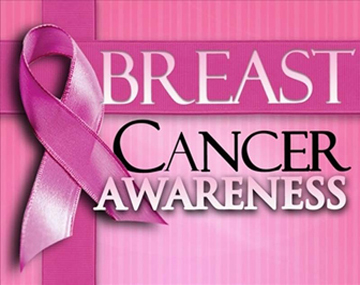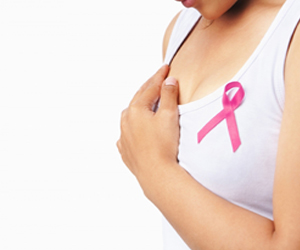Understanding Breast Cancer

One of the most pervasive cancers in women today is breast cancer. One in eight women is diagnosed with breast cancer every day a statistic not to be taken lightly. According to World Health Organization (WHO) reports, over 508,000 women died of breast cancer in 2011, and World Cancer Research Fund (WCRF) reports around 1.7 million new cases in 2012. Cancer rates in general, though particularly breast cancer, are on the rise among South Asian women, making the need for early detection and screening even more important than ever.
What is Breast Cancer?
Healthy cells make up the tissue and organs in a body. Cells are continually growing and as they die off, are replaced by new, healthy ones. Malignant, or cancerous, cells tend grow and take over nearby healthy cells. A mass of malignant cells forms a tumor, which does not function as it should. If left unchecked and untreated, tumors can become deadly spreading throughout the body.
Breast cancer typically begins in the milk ducts, which is why more women than men are diagnosed with the disease. Tumors in the breast tend to grow slowly; by the time a lump is large enough to feel, it may have been growing for as long as 10 years. Some tumors, however, are aggressive and grow much faster.
Importance of Early Detection
Effective treatment of cancer has been linked to early detection. Finding tumors early can be the difference between life and death. Thousands of people beat their cancer when diagnosed early, as it is easier to curtail the growth of cancer cells and provide effective treatment in the early stages.
 The first step is to be aware of breast cancer symptoms and warning signs. Some signs to be look for include a change in the size or shape of the breast or nipple, bloody discharge or rash on the nipple, swelling/lump in your armpit are few of the common symptoms (not necessarily cancerous) that require screening. Keep track of changes by examining your breasts around the same time each month. Selfexam by feeling around each breast in a circular motion. Look out for unusual lumps or knots. Even if you had a benign lump in the past, do not ignore any new growth. Be sure to also go beyond the breast and feel in the underarm area for any lumps.
The first step is to be aware of breast cancer symptoms and warning signs. Some signs to be look for include a change in the size or shape of the breast or nipple, bloody discharge or rash on the nipple, swelling/lump in your armpit are few of the common symptoms (not necessarily cancerous) that require screening. Keep track of changes by examining your breasts around the same time each month. Selfexam by feeling around each breast in a circular motion. Look out for unusual lumps or knots. Even if you had a benign lump in the past, do not ignore any new growth. Be sure to also go beyond the breast and feel in the underarm area for any lumps.
Yearly mammograms and regular visits to the doctor are very important at any age, but especially after the age of 40. The most used screening tests include mammograms, ultrasounds, breast MRIs, breast biopsies, and ductal lavages. If your family has a history of cancer, younger women should consider beginning mammogram screening early.
Types of Treatment
The type of treatment a patient receives depends on the exact form and stage of cancer. Major treatment options include: surgery, radiation, hormone therapy, chemotherapy, and targeted therapies. As is the case with any major procedures, do not hesitate to get a second opinion. Discuss the pros and cons with your family to determine the right step for you.
Reducing Risk
 About 8590% of breast cancers are due to genetic abnormalities that occur due to aging and general “wear and tear.” Risk factors that cannot be controlled include your gender, age, family history, and genetics. While it is not possible to prevent breast cancer or control genetics, it is possible to reduce the risk and impact of the cancer by taking care of your body through a healthy diet and active lifestyle.
About 8590% of breast cancers are due to genetic abnormalities that occur due to aging and general “wear and tear.” Risk factors that cannot be controlled include your gender, age, family history, and genetics. While it is not possible to prevent breast cancer or control genetics, it is possible to reduce the risk and impact of the cancer by taking care of your body through a healthy diet and active lifestyle.
Risk factors you can control include eating unhealthy foods, smoking or drinking alcohol, and not getting regular exercise. Researchers now suspect that diet is partially responsible for about 30% to 40% of all cancers. Eat a wide variety of foods, especially fruits, vegetables, legumes, and whole grains, to get all the vitamins and nutrients needed to keep your body healthy and give your body energy.
Regular exercise has also been shown to reduce the risk of cancer. The American Cancer Society recommends getting 4560 minutes of physical exercise 5 or more days a week. This may seem impossible, but taking simple steps, like parking farther or going for morning/evening walks, will help you meet this goal.
Maintaining a healthy weight, eating a wide variety of healthy foods rich in vitamins and minerals, and regular exercise will go a long way towards reducing one’s risk of getting cancer.
Moving Forward
Once diagnosed with cancer, a patient can feel overwhelmed and a loss for next steps. Lean on family for support and be in communication with your doctors. Above all, always ask questions. Treatment can take a physical and mental toll of a patient causing much much stress to the body while fighting cancerous cells. Following a healthy diet is more important than ever during the treatment process. Follow a healthy diet rich in antioxidants, vitamins and minerals during the treatment process. A healthy diet comprising of fruits, legumes, vegetables, whole grains, olive oil, low fat dairy products, and nuts high in Omega3s, are good for regenerating tissues that are damaged in the treatment process. They also help boost immunity and maintain a healthy body weight.
It is best to avoid foods that are known to increase estrogen or oxidation in the body. Reduce or completely avoid processed food, sugary food, alcohol, and high fat dairy products, which can lower energy levels.
Resources
Today, many online and inperson support groups and resources are available to those diagnosed with breast cancer. Below are some resources that can help during the cancer- fighting process.
Breastcancer
http://www.breastcancer.org
Cancer Care
http://www.cancercare.org
Susan G. Komen Foundation
http://ww5.komen.org
National Breast Cancer Foundation
http://www.nationalbreastcancer.org
























